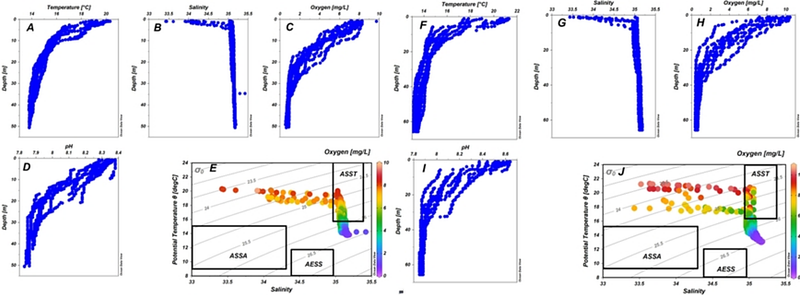Origin, Trophic Transfer And Recycling Of Particulate Organic Matter In The Waters Of Two Upwelling Bays Of Humboldt Current System: Insights From Compound-Specific Isotopic Compositions Of Amino Acids

Origin, Trophic Transfer And Recycling Of Particulate Organic Matter In The Waters Of Two Upwelling Bays Of Humboldt Current System: Insights From Compound-Specific Isotopic Compositions Of Amino Acids
Srain, B.; Valdes, J.; Camano, A.
AbstractParticulate organic matter (POM) is considered the primary source of N and C in the ocean. In pelagic marine environments, POM consists of algae and detrital nitrogen, with amino acids representing the largest chemical fraction. Currently, measurements of the isotopic distributions of N atoms in amino acids are considered powerful tools for exploring and determining the metabolic sources involved in the synthesis and degradation of organic matter. In this study, we measured the {delta}15N of amino acid signatures ({delta}15N-AA) in suspended and sinking POM collected from two upwelling bays in northern Chile, to examine isotopic enrichment patterns and gain insights into the origins, trophic transfer, and heterotrophic reworking of this organic fraction. At Mejillones Bay, the {delta}15N-AA values of suspended POM ranged from 5 {per thousand} to 27 {per thousand}, while at Antofagasta Bay, these values oscillated between 9 {per thousand} and 24 {per thousand}. The sinking POM collected from sediment traps exhibited values and isotopic fractionation patterns similar to those observed in the deeper layers of the water columns in both bays. The enrichment patterns of {delta}15N-phenylalanine and {delta}15N-NO3- demonstrated the autochthonous character of the POM and its predominantly marine origin at both bays. The parameters trophic transfer ({Delta}Tr) and heterotrophic reworking ({Sigma}V) indicated that the heterotrophic recycling of POM occurs more intensively at through the oxyclines. Furthermore, these parameters revealed an enhanced trophic transfer magnitude and higher heterotrophic re-synthesis of POM in the waters of Mejillones Bay, resulting in a lower flux of exported POM than that observed in Antofagasta Bay. These differences highlight the spatial heterogeneous nature of organic matter transfer and reworking processes in this upwelling system.


